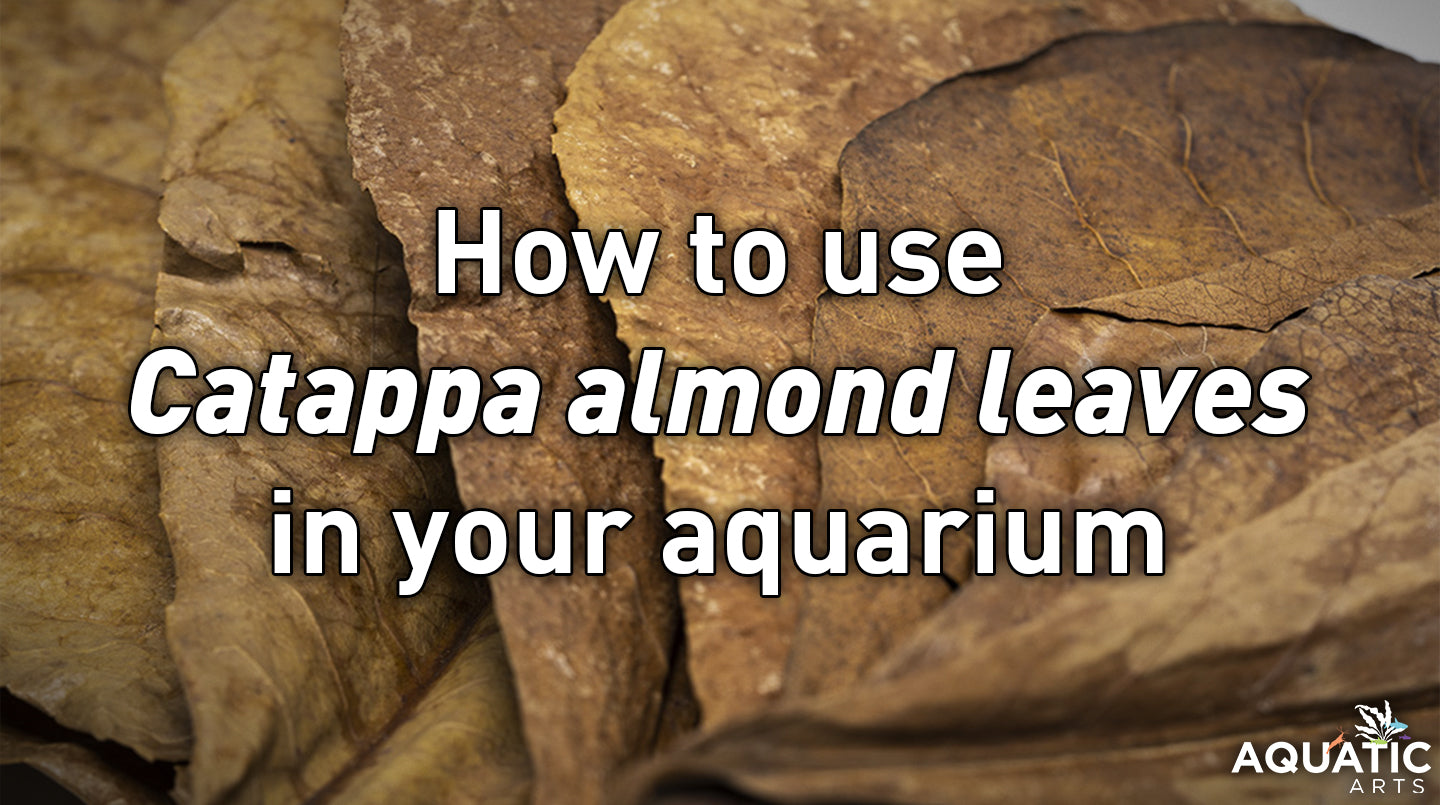How to use Catappa almond leaves in your aquarium

Using Catappa Almond leaves (also known as Indian Almond leaves or Ketapang leaves) in your aquarium is a straightforward process, and it can provide several benefits to your aquatic environment. Here's a step-by-step guide on how to use Catappa Almond leaves effectively in your aquarium:
-
Select Quality Leaves: Start by choosing high-quality, pesticide-free Catappa Almond leaves. You can purchase them from reputable aquarium stores or online suppliers. Make sure they are clean and free from any visible contaminants.
-
Rinse the Leaves: Before adding the leaves to your aquarium, rinse them under running water to remove any surface dirt, dust, or impurities. This step helps ensure a cleaner introduction into your tank.
-
Preparation: There are two common methods to prepare Catappa Almond leaves for aquarium use:
a. Boiling: Boil the leaves in a pot of water for 5-10 minutes. Boiling softens the leaves and helps release their beneficial compounds. After boiling, let the water cool to room temperature before adding both the leaves and the water to your aquarium.
b. Soaking: Alternatively, you can soak the leaves in a container filled with dechlorinated water. Leave them in the water until they become soft and sink on their own. This process may take several hours or even a day.
-
Add Leaves to the Aquarium: Once prepared, you can place the Catappa Almond leaves directly into your aquarium. Position them where they won't obstruct the flow of water or get trapped in decorations or filters. Some aquarists prefer to bury them in the substrate for a more natural look.
-
Monitor Water Parameters: As Catappa Almond leaves decompose, they release tannins and humic acids into the water, which may lower the pH and make the water slightly more acidic. Regularly monitor your aquarium's water parameters, especially the pH level, to ensure it remains within the suitable range for your fish and other inhabitants. Adjust as needed.
-
Replace Leaves as Needed: Catappa Almond leaves have a finite lifespan, and their beneficial effects diminish as they decompose. To maintain a consistent supply of tannins and other compounds, replace the leaves every few weeks or when you notice that they have started to break down.
-
Observe Benefits: Over time, you should observe the positive effects of Catappa Almond leaves in your aquarium, such as improved water quality, enhanced coloration in some fish species, and reduced stress among your aquatic inhabitants.
Remember that the impact of Catappa Almond leaves can vary depending on the size of your aquarium, the number of leaves used, and the specific needs of your aquatic species. Always tailor their use to the requirements and preferences of your aquarium's residents, and enjoy the natural benefits these leaves bring to your aquatic environment.




